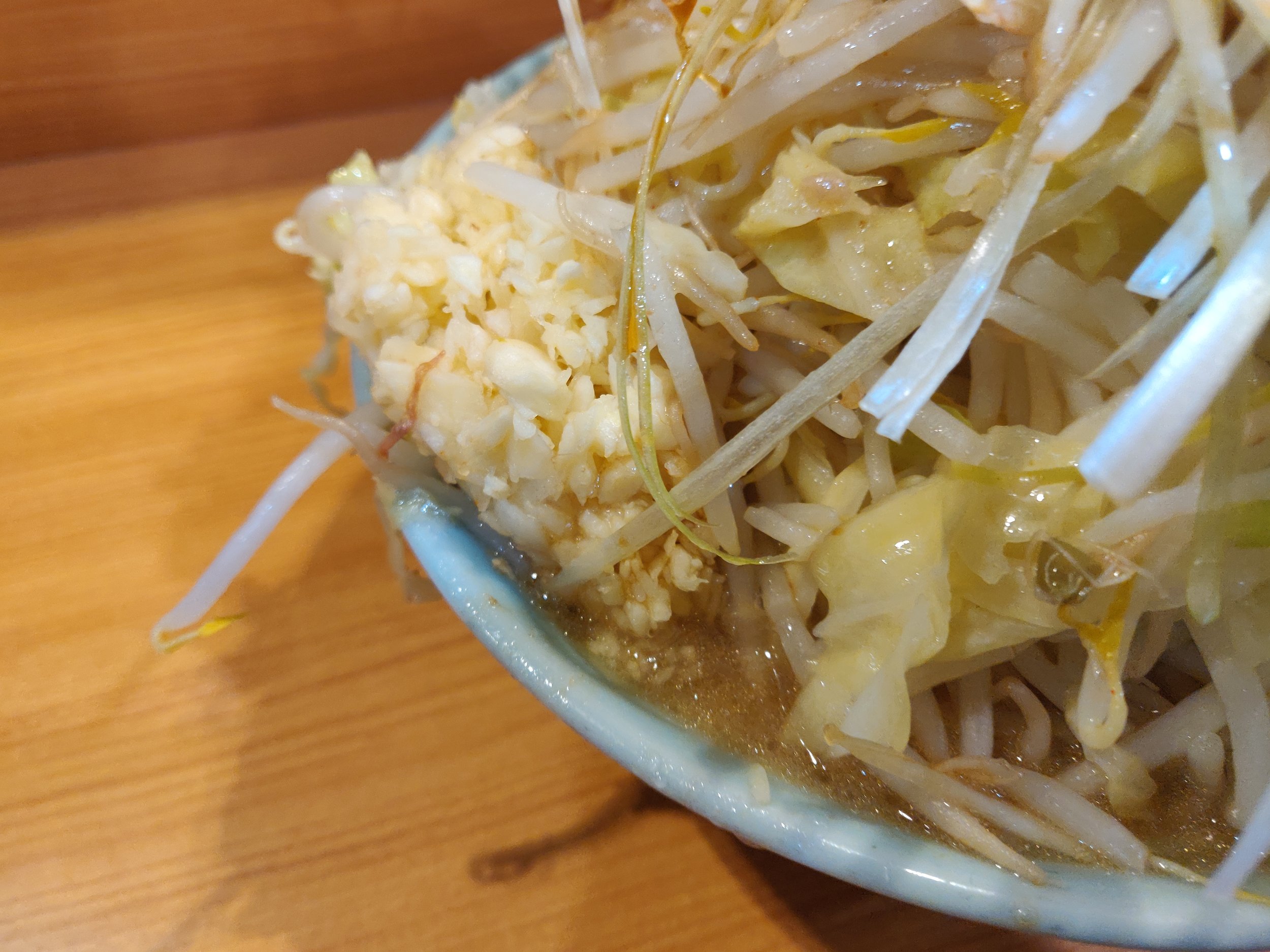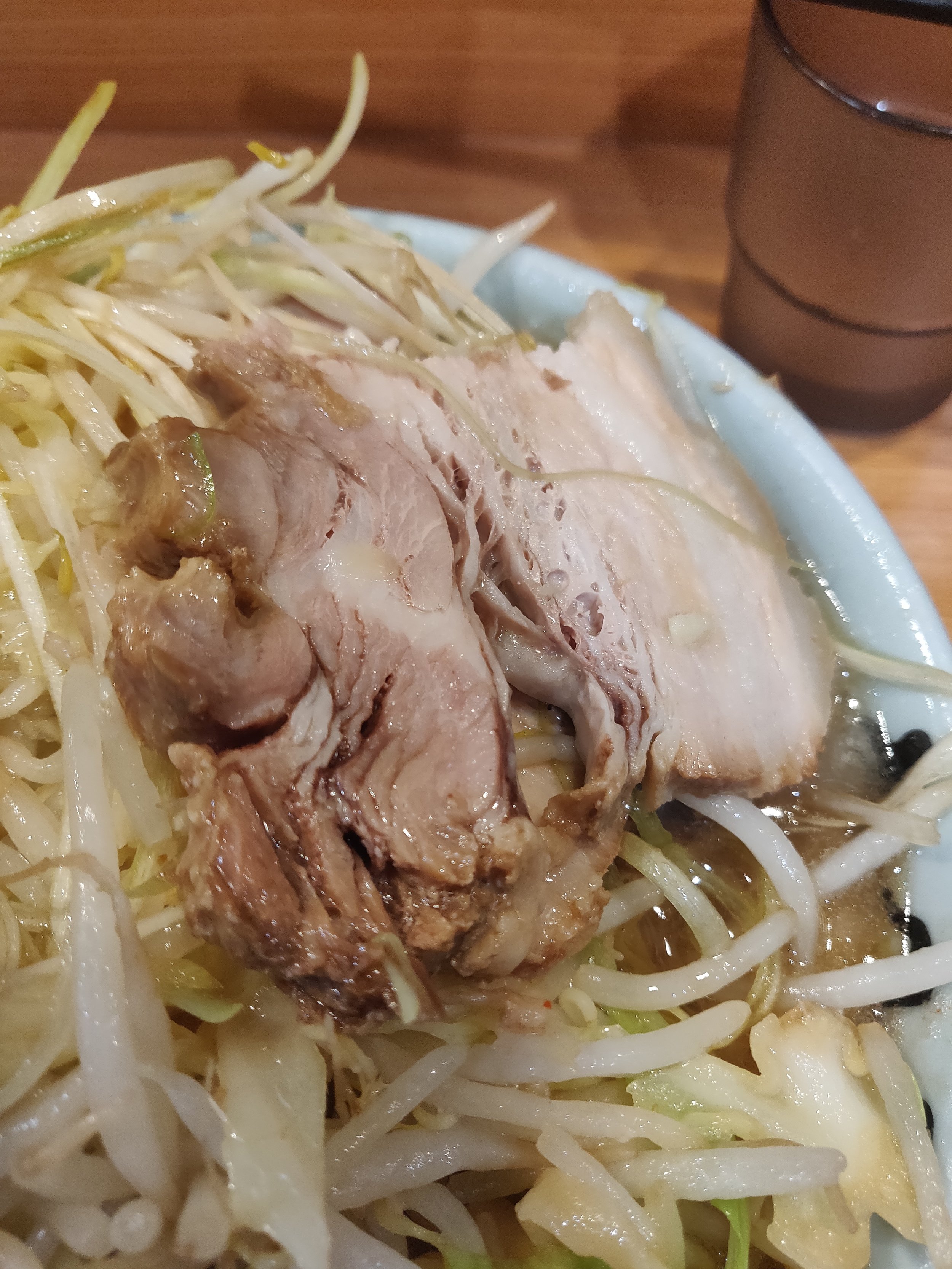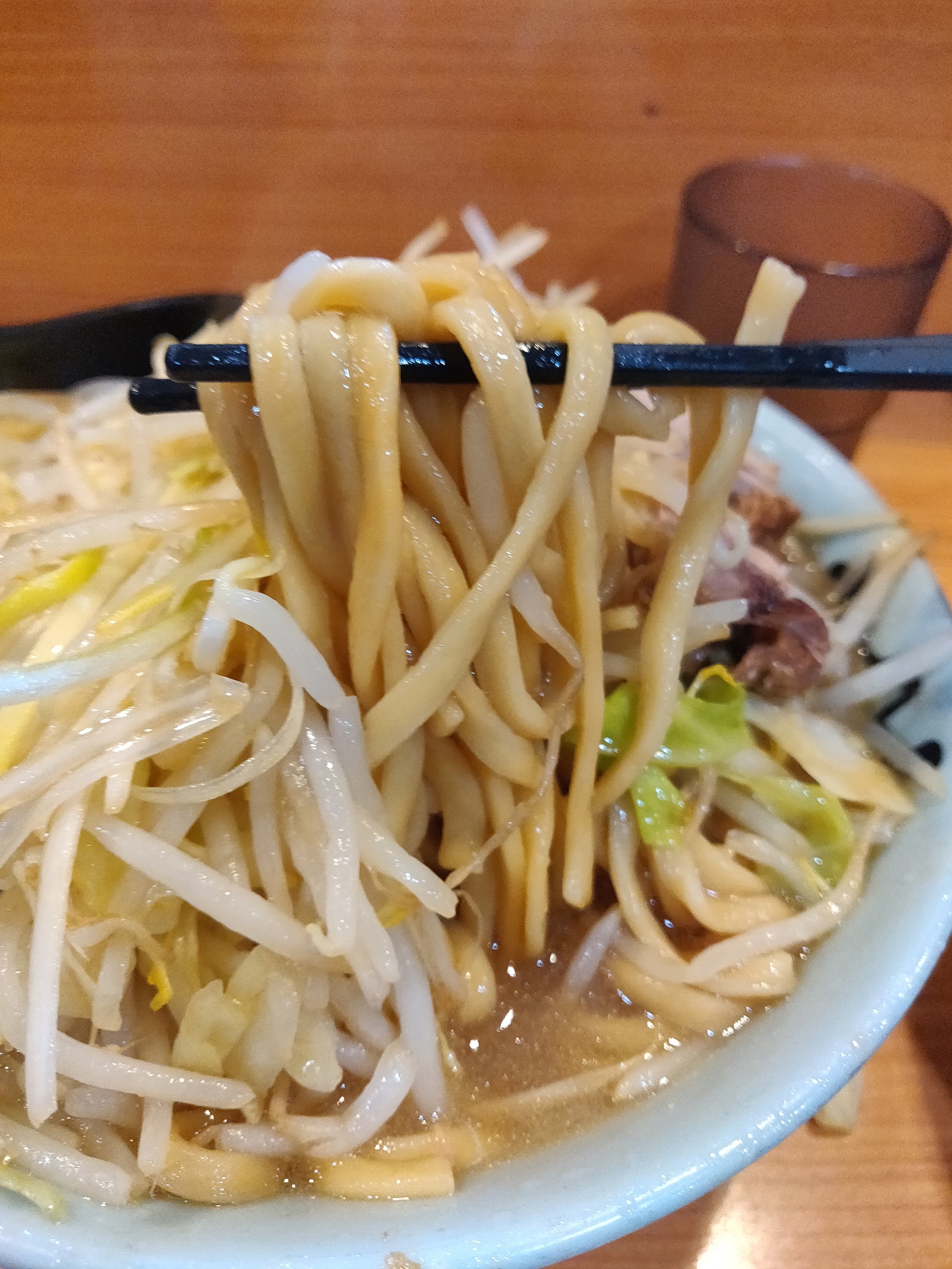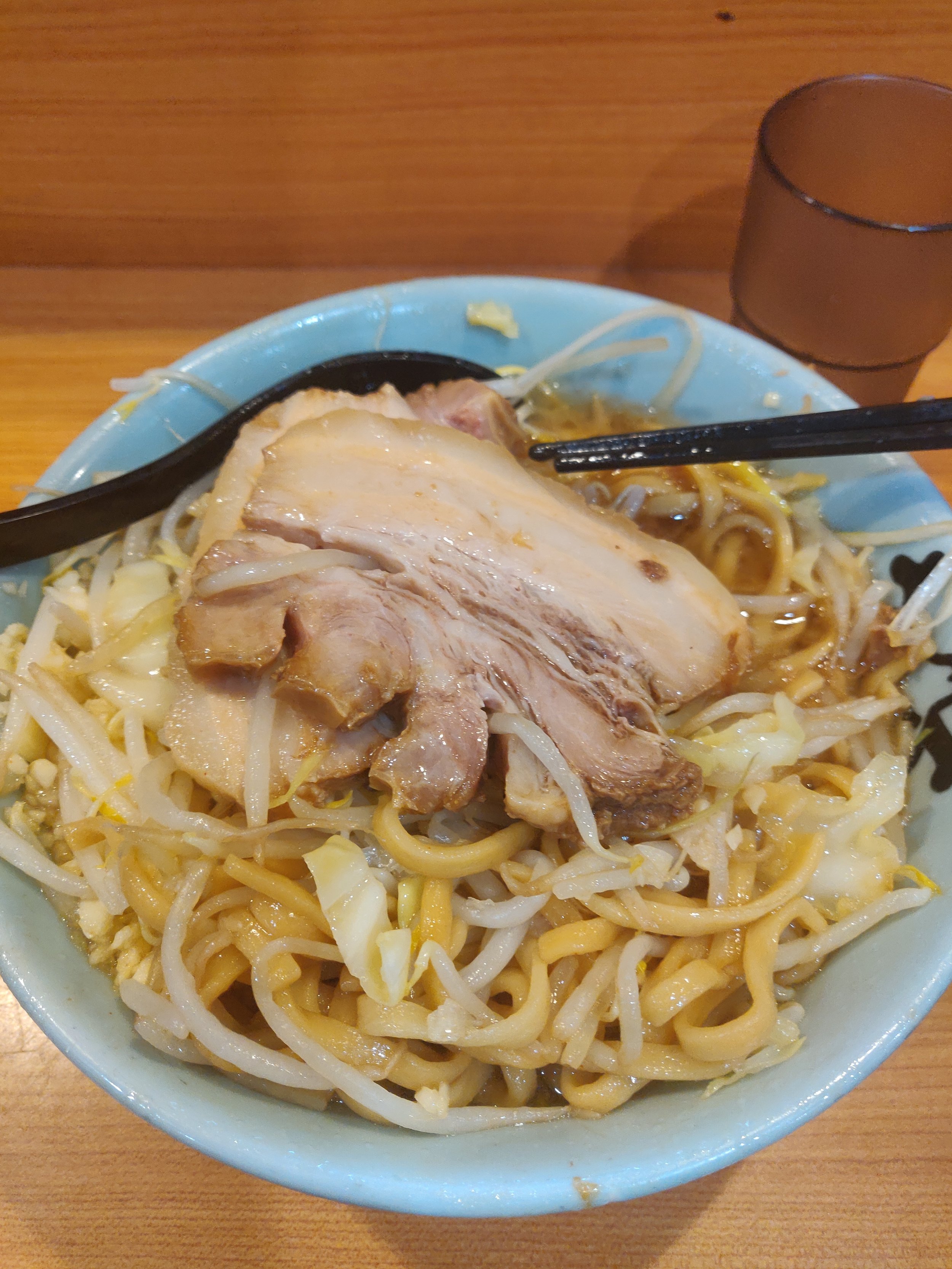Ramen Jiro Hachioji Yaen Kaido 2 (ラーメン二郎 八王子野猿街道店 2); Best Jiro Ramen, Keio Horinouchi
I’ve been pretty hesitant writing reviews about Ramen Jiro (hence my lack of Jiro reviews) as they are quite strict on having their shops published online and in magazines. However, the owner of the Hachioji location recently followed me on Instagram and welcomed me to the shop, so I decided this is a better time than any to write my first Jiro review. Initially I wasn’t expecting to write a review about Jiro and had planned just to enjoy a bowl for my own personal satisfaction so I don’t have a ton of photos besides the ramen… my apologies in advance. As a background, Hachioji is a district of Tokyo located on the west side and it encompasses the biggest area of Tokyo. I mention this as some might mistake the store to be located near Hachioji station, but it is in fact located near the Keio Horinouchi station. Google maps will be your friend on your way here as it is a bit of a complicated walk from the station, but it is hard to miss once you’re in the area as this Jiro draws huge lines and has a very noticeable banner up front. Once you make your way to the store you need to purchase your tickets at the machine inside before taking your place in line. Enter from the door on the left, purchase your tickets and make your way back outside to the back of the line.
As with most Jiro restaurants, this Hachioji location offers:
小ラーメン (Sho Ramen; Small) 750円
大ラーメン (Dai Ramen; Large) 850円
つけ麺 (Tsukemen; Small tsukemen) 900円
大つけ (Dai Tsuke; Large tsukemen) 1000円
プチ二郎 (Puchi Jiro; Extra small ramen) 730円
ポッチ二郎 (Pocchi Jiro; Women size ramen, smaller than extra small) 680円
Warning: First timers are not allowed to purchase the Large as it is a ton of food. The wait staff who will take your ticket will warn you beforehand and try to gauge whether you can finish or not. If you don’t finish, you may be banned from the store so be prepared. I will say it again, it is a TON of food. You’ll see in the picture below, but the Sho Ramen is still a lot for most to handle. Please don’t overdo it here at Jiro; it will not be a fun experience being yelled at in the shop.
The toppings available here are:
ブタx1 (Extra Pork Char Siu) 150円
ブタx2 (2x Extra Pork Char Siu) 200円
うずら (Quail Eggs) 100円
しょうが (Ginger) 50円
Kiri (Cream Cheese) 100円
ネギ (Shredded Leek) 150円
生たまご (Raw Egg) 50円
W生たまご (2x Raw Eggs) 100円
たまねぎたまご (Onions and Raw Egg) 100円
ビール (Beer) 300円
For my order on this visit, I decided to go for the 小ラーメン (Small Ramen) with ねぎ (Shredded Leek) as topping. Once you take your seat, hand the tickets for your order to whoever is behind the counter. For those of you who are unaware, Ramen Jiro has a unique ordering style. Yasai (vegetables consisting of blanched cabbage and bean sprouts), Ninniku (pressed garlic), Abura (pork fat), and Karame (seasoning sauce) are all free of charge and when the chef asks what you’d like, you call out which toppings you would like and how much of each. If you say each each topping, you will get an average amount of those toppings. If you want a little extra of a certain topping, you can say “Mashi” after which ever topping you want more of. “Mashi-Mashi” will be even more of said topping. So for instance, if you wanted no garlic, extra vegetables, and normal pork fat and seasoning sauce, you would say “Yasai mashi, abura, karame”. If you want extra of all the toppings you can say “Zen-Mashi”, or everything extra. For a comparison, my ramen is a “Zen-Mashi”, meaning I got extra of all the toppings. As I said before, Jiro is known for ridiculously large portions so please be careful when ordering you bowl.
While they all carry the Ramen Jiro name, each Ramen Jiro location has their own style and pizzazz to their bowl. This particular Jiro in Hachioji is famous for having unique toppings as well as the best overall bowl of ramen. Most Jirorians, or Jiro fanatics, will agree that all aspect of the ramen from the soup to noodles, down to the char siu is fantastic. I must say, I have to agree with this assessment as this may be my favorite Jiro location. The basic soup for Jiro is a thorough simmer of pork bones, pork fat, and a variety of vegetables. The amount per ingredient and time they simmer the soup for is completely up to the owner of each franchise and this will affect how creamy, light, sweet, savory, and salty the soup turns out. Hachioji Jiro’s soup is an amazing combination of sweet, savory, and salty while still remaining quite light for the soup variety. The sweetness comes from the vegetables they use in the simmering process and is more the sweet notes you might find from a perfectly ripe carrot or apple. Savoriness comes from the aforementioned pork bones and pork fat which they emulsify during the simmering process ensuring that the marrow is thoroughly melted through and pork fat is dissolved. However, important thing to note is that it is not a creamy Tonkotsu soup like a Hakata ramen. Since the soup is simmered on a low heat, it is quite light and won’t have much creamy notes like a few other Jiro locations.
My favorite part of Jiro’s ramen, however, are the noodles. Jiro is famous for using a certain blend of strong flour called オーション (O-shon) which has a low degree of flour purity due to its mix of wheat flour, but has plenty of gluten. The water content of the noodles are low and thus resulting in very chewy noodles. The flour used is similar to that used in sourdough bread so similarly the noodles have a lot of flavor and texture (the flour is not fermented though so you won’t get those sour notes like a sourdough). I feel that the noodles at the Hachioji location is the perfect combination of flour flavor and chewy texture that really accentuates the pork broth based soup.
Secondly, the pork char siu is simply fantastic. The Hachioji location uses a pork belly with a much meatier cut so that the slices are not just slabs of fat. The pork belly goes in to the soup whole during the broth simmering process and is therefore incredibly tender and soaks up the fantastic flavors of the broth. While the fat portion of the char siu will melt in your mouth, there is still enough chewy meat that shreds like pulled pork giving a nice texture contrast.
Finally, my favorite topping, the Negi, or shredded leek. The Negi is finely sliced and marinated in a sesame seed oil seasoning giving a nice tangy bite, while providing an excellent smoky, sesame aroma to the bowl. This Hachioji location is one of the few locations that offer this topping and I highly recommend it as the Negi helps cut through the fattiness of the soup and pork char siu… perfect harmony in my opinion.
Although the restaurant is quite far, not very foreigner friendly, and is quite strict on their rules, Ramen Jiro has cemented itself in ramen history and culture. Only a handful of people have never heard of Jiro and many ramen enthusiasts visit Tokyo just to dine at one of their popular franchises such as this one. While the Mita station location is the original shop, Hachioji, in my opinion, is the best. If you want to experience an important part of ramen history, go have a visit. I can guarantee at the least that you won’t leave hungry.





